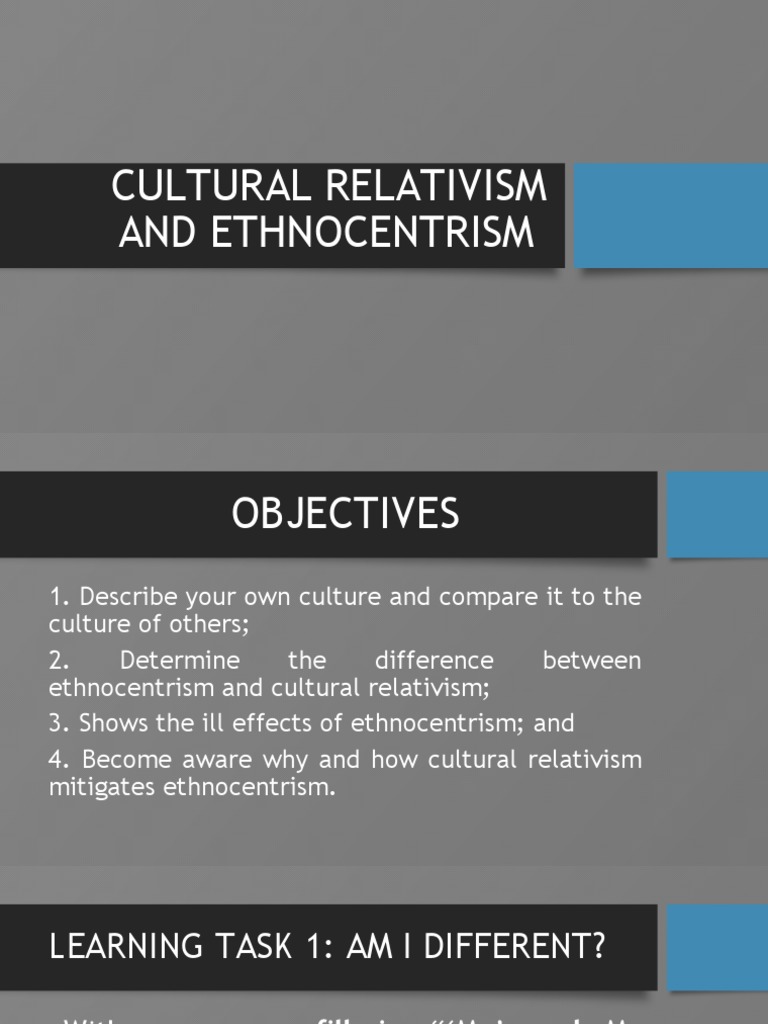In the academic landscape, two pivotal concepts shape the perceptions and interactions within university culture: ethnocentrism and cultural relativism. Like the dual forces of a powerful river, they flow through the corridors of academia, influencing students’ engagements and the institution’s policies. These concepts symbolize the tension between self-identity and inclusive understanding, akin to examining a mosaic where each tile represents a unique culture, yet collectively forms a grand picture. This analysis delves into how ethnocentrism and cultural relativism manifest within universities, examining their influences on the student body, institutional policies, and the broader implications for societal development.
At the heart of ethnocentrism lies a conviction that one’s own culture is the benchmark against which all others are measured. This phenomenon can be akin to viewing the world through a narrow keyhole—restricted, limiting, and often distorted. In university settings, students arriving from diverse backgrounds may encounter an environment steeped in prevailing cultural norms that may unconsciously propagate this ethnocentric outlook. For instance, international students often grapple with feelings of alienation when their customs, practices, or ideologies clash with the predominant cultural narratives espoused by their peers. This divergence not only challenges their identities but can also engender a sense of inadequacy or marginalization.
Conversely, cultural relativism emerges as a counterbalance to ethnocentrism, advocating for the appreciation and acceptance of cultural differences without imposing one’s own cultural lens. It beckons students to step beyond their comfort zones and embrace an expansive worldview, recognizing that each culture is imbued with its own values and paradigms. Cultural relativism urges individuals to navigate the labyrinth of cultural diversity with grace, fostering an environment where dialogue and collaboration flourish. Within university classrooms, this perspective can cultivate a rich tapestry of thought, allowing for the exploration of global issues through multiple lenses, thereby enriching the learning experience.
Consider the metaphor of a grand orchestra. Each instrument contributes to a cohesive melody, yet each musician must first master their own craft. Ethnocentrism can be likened to a soloist who refuses to acknowledge the contributions of others, playing their piece in isolation, whereas cultural relativism harmonizes the ensemble, where every unique sound matters and creates a beautiful symphony. This orchestral metaphor extends into how collaborative projects, discussions, and research endeavors thrive when students adopt a culturally relativistic perspective. When diversity is celebrated, the potential for innovation and creativity expands exponentially.
The impact of these dual forces extends beyond student interactions; it permeates the institutional fabric itself. Universities, as microcosms of society, often mirror larger cultural trends. An institution steeped in ethnocentrism may unwittingly perpetuate policies that prioritize certain demographics over others, influencing everything from admissions processes to curriculum design. Conversely, a university that embraces cultural relativism champions inclusivity, creating programs aimed at supporting marginalized groups and fostering an environment that prioritizes equity. This commitment can manifest in various forms, including cultural competency training for faculty, diversified curricula that reflect a multitude of perspectives, and initiatives aimed at fostering inter-cultural dialogue.
Despite these benefits, cultural relativism is not devoid of challenges. While it encourages respect and understanding, it can sometimes lead to ethical dilemmas. The question arises: should moral norms be universal, or are they valid only within their cultural context? This conundrum can create friction in a university setting, particularly when discussing contentious topics such as human rights violations or environmental policies impacted by cultural practices. The goal is to navigate this quagmire skillfully—striking a balance that permits critical analysis while maintaining respect for diverse cultural practices.
Moreover, the intersection of ethnocentrism and cultural relativism in university culture can have profound implications for engagement with global challenges, such as climate change. Climate justice is a pressing issue that requires a multifaceted approach—one that respects and incorporates indigenous knowledge systems alongside scientific research. Ethnocentric attitudes may dismiss these alternative epistemologies, relegating them to the periphery of academic discourse. On the other hand, cultural relativism promotes an understanding that harnesses diverse modes of thinking, encouraging sustainable solutions that resonate with a wider audience. This shift in perspective not only enhances academic inquiry but also fosters a sense of global citizenship among students, preparing them to address complex, interconnected issues the world faces today.
In conclusion, the interplay between ethnocentrism and cultural relativism in university culture is both intricate and essential. Like the changing tides of the ocean, these concepts shape the landscape of learning, interaction, and personal growth. Universities stand at the crossroads of these ideologies, with the potential to foster a climate of inclusivity and understanding, or to perpetuate division and misunderstanding. The challenge lies in cultivating an environment where students are encouraged to embrace the richness of cultural diversity while remaining critical of their own biases. Universities must strive to be sanctuaries of inclusive dialogue—places where every voice is heard, every culture celebrated, and every individual empowered to contribute to the global community. In doing so, they can not only enhance the educational experience but also contribute to a more just and equitable world.
